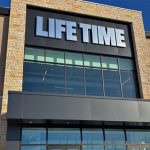Big 5 Sporting Goods Corp. said that its first quarter results were in line with its lowered guidance, but it again reduced its guidance for the rest of the year due to ongoing weak sales. On a conference call, Barry Emerson, the company's CFO, said “the continuing softness in the consumer environment and the resulting unpredictability of customer traffic and sales make our ability to forecast the remainder of the year challenging.”
For the second quarter, BGFV expects a decline in same-store sales in the mid-single-digit range and earnings in the range of 6 cents to 12 cents per share. That compares with 26 cents a share a year ago. For the full year of 2008, Big 5 expects a comp decline in the low to mid-single-digit range and earnings in the range of 60 cents to 85 cents a share. That compares with guidance between 75 cents to $1.00 given on February 28 and year-ago results of 87 cents a share.
In the first quarter, the comp decline reflected a decline in customer traffic and continued weakness in the roller shoe category compared to the prior year. This category alone accounted for approximately 40% of the overall decline in comps. Average transaction was essentially flat for the quarter. Additionally, comps were negatively impacted by approximately 100 basis points as a result of a loss of a business day during the quarter, due to the shift of the Easter holiday.
By category, apparel comped slightly positive, largely due to sales of winter-related products. Overall winter-related products grew in the double-digits due to favorable weather in many of the companys markets. Hardgoods were down low-single-digits and footwear was down low-double-digits, due in large part to the roller shoe business.
Product margins declined 83 basis points for the quarter, and were negatively impacted by higher sales of winter-related products, lower sales and margins in roller shoes, and slightly more aggressive promotional pricing in an effort to drive sales and reduce merchandise inventory. On a per store basis, quarter-end inventories were down 5.3% from the prior year.












